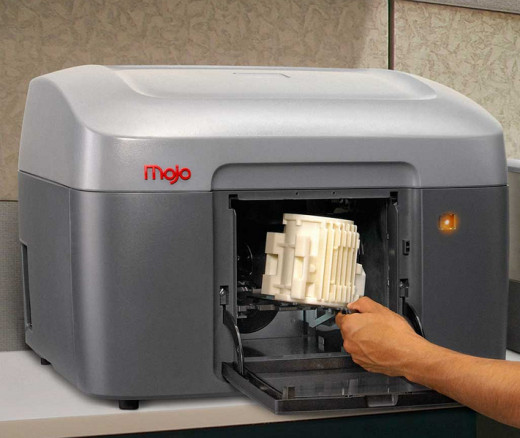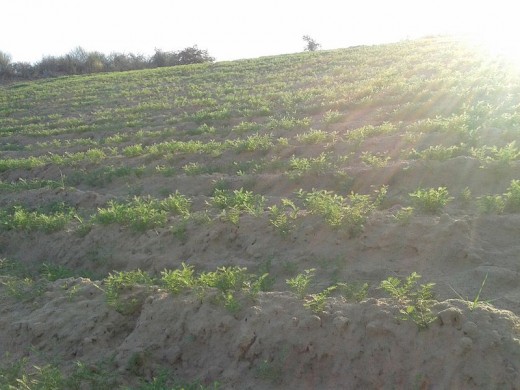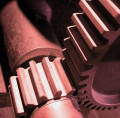What Will a Post Scarcity World Look Like?
The first step toward post scarcity?

The world of tomorrow?
”A world where no child goes to bed hungry and there are no poor people.” A paraphrase of how Gene Roddenberry described the future Earth of “Star Trek: The Next Generation." Some futurists think we may actually be getting close to producing something close in the real world. 3D printer technology is already moving manufacturing of many products from the factory into the home and will do so even more as the technology is perfected and costs come down. Many predict that this technology will, eventually, merge with the ability of the scanning tunneling electron microscope to move individual atoms. An atomic scale printers capacity to create will be limited only by the availability of the correct raw materials, the power supply, and having a pattern to work with.
Printable food
- Food - 3D Printing Industry
The latest 3D printing and Food news and trends in additive manufacturing industry. Industry leading coverage on 3D printers featuring videos and images.
Good, fast, cheap; pick any two
3D printers that can make food already exist. When taken to an atomic scale it becomes conceivable for a printer to reprocess any organic waste into useable food. Plants actually do the same thing naturally, turning sunlight, air and compost into fruit, seeds, or other parts that we eat. An atomic scale printer could do the same, faster and without needing the same acreage or the same plant tissues that we can't digest. Hypothetically one could 3D print an “apple” with no need for a tree, no seeds, and no need for pesticides or preservatives since it would, presumably, be eaten as soon as it was created. Likewise a printed steak could be created with no need for a cow and therefore no artificial hormones. While it's likely that animal rights proponents will be in favor of the later one must wonder what organic produce fans will think of the former. Anyone who sees this as a cure to world hunger should be reminded of the engineering adage, “Good, fast, cheap; pick two.” Cheap in the case of a 3D printer comes in the form of the energy needed. A tree makes apples using solar energy over the course of a summer. For a printer to do the same thing faster would require proportionally more energy. As the engineering adage implies it might be possible to produce food that's not as good for less energy in a short time. However, in this case not as good probably means less nutritious which is the last thing you need in a famine. For 3D printers to provide food on site in famine and disaster areas will either require intact local power infrastructure or powerful portable generators. Unfortunately in many cases of famine, starvation goes hand in hand with war. One side of a conflict will often seize supplies intended for the starving and give them to their soldiers. Optimists might think that removing the scarcity of food and other supplies will put an end to war. Unfortunately, though many wars are fought over resources, they are also fought over political ideology, religion, and ancient tribal and ethnic grudges that no amount of resources will make go away. Food printers and generators may end up being just another relief supply to be stolen. Worse the printers could be re-purposed to make weapons, ammunition or explosives.
Will this become obsolete?

In the developed world
In the more developed parts of the world farming, ranching and numerous manufacturing jobs may become obsolete as 3d printing becomes more accessible. Manufacture, distribution and sale of many small goods may be extinct by the end of the twenty first century. It's likely that larger manufactured goods like cars will still be produced at centralized factories. Although those factories might end up being in the form of industrial sized printers. Rather than mass producing hundreds of identical items those devices would produce items to desired specifications as they are ordered by a purchaser. Additionally rather than producing a single kind of product these industrial printers could build a car one day, a big screen T.V. the next and parts for another industrial printer to be assembled next door on the third day. While manufacturing jobs die out jobs in printer maintenance, mining (to gather raw materials and fuel), and power plants will probably be booming businesses. The resulting job displacement will be at least comparable to the industrial revolution in terms of the societal disruption that will occur. Like those previous technological revolutions the post scarcity world will eventually lead to a new social equilibrium.
Environmental impact
Those in the environmental movement might well be of two minds about the potential of this emerging technology. While it will remove the need for acres of farm and ranch land it will also require many more power plants to supply the energy requirements. Renewable sources may be insufficient (or unable to deliver sustained output) to meet the energy requirements of this technology. However, while the power requirements of the technology may end up putting more greenhouse gasses into the air, those same gases can be a raw material that a printer could collect and use. If an atomic scale printer is energy efficient enough it might be able to pull more carbon from the air to turn into food or plastics than will be needed to power it. Although that is only thermodynamicly possible if the resulting product put's the carbon in a lower energy state than it was in the fuel burned that still includes a huge amount of useful plastic products. A printer that can rearrange individual atoms could also be used to break down all waste products into usable raw materials making everything recyclable with no need for central processing facilities. Even if the printers are not so efficient as to pull more carbon from the air than their power requirements generate, the increase in wild plant growth in what used to be farm and ranch land might also lead to a carbon neutral situation.
Technology can change the world but will it change human nature?

Can we really eliminate poverty?
While atomic scale printing might will lead to much greater abundance of food and consumer goods than we have today it will not be a paradise where you can have whatever you want at the push of a button. People who design the goods people print will, justifiably, want to be compensated for their efforts. While some substances can be printed, literally, out of gases in the air (diamonds will probably become worthless) others will still have to be mined. Power plants will still have to run. Even if a method is discovered to manipulate matter for a 3D printer on a subatomic scale, power production, design and repair will still be busy businesses. It may be possible to put all the brute labor in the hands of machines freeing humans for creative managerial or service positions. A post scarcity world will not eliminate poverty, or homelessness and probably won't end war. It will however make feeding the poor and caring for the homeless easier. No amount of resources can really eliminate poverty, because it is relative. There is always someone with less than his neighbor. You can't eliminate homelessness unless you address why the homeless are on the street. For some it might be as simple as a job loss that they never recovered from. For others addiction or mental illness must be addressed before they can be helped. We may be able to ensure that everyone has enough food and clothing, eliminating other problems would require changing people, perhaps so much that they wouldn't really be human anymore.







